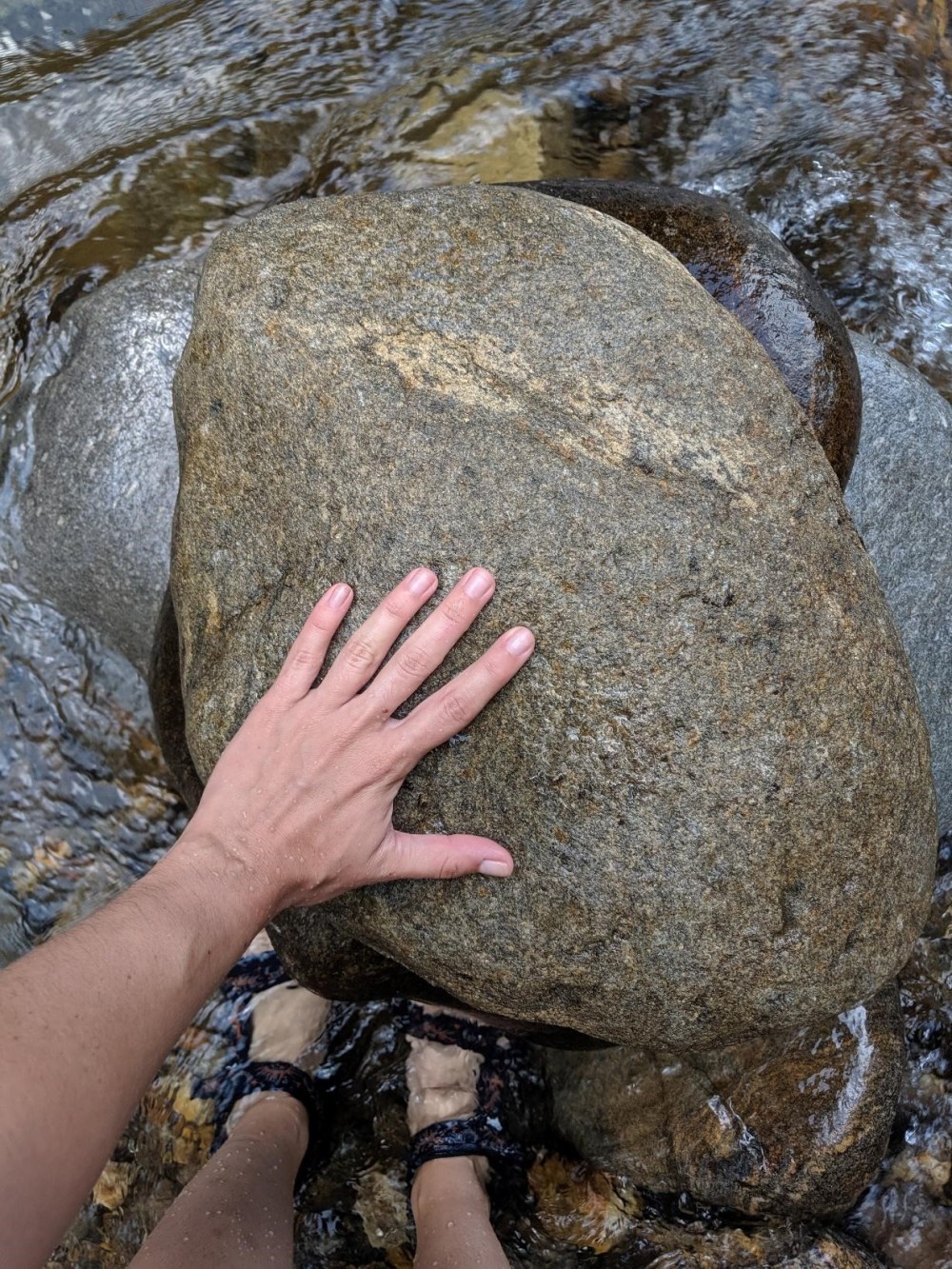By: Lauren Diaz
The Appalachian mountains share their story with us in many forms, beginning from their wise and weathered peaks, through their towering forests, and down to the rushing roar of their rocky streams and rivers. Many of these clear, mountain rivers are inhabited by the cryptic and awe-inspiring Eastern Hellbender. Truly a living fossil, the hellbender has existed for millennia and yet sadly it has been quickly disappearing over the last century. The Hellbender is a lonely species; it is the only giant salamander in the western hemisphere, as its cousins live in China and Japan. An ancient creature that is hardy enough to withstand thousands of years of flooding and drought, Hellbenders were once abundant even in the mainstem of the Ohio river. Unfortunately, they are now being lost at an unprecedented rate, and for many reasons we don’t understand.
Although many factors implicated in the Eastern Hellbender’s rapid decline are large scale — urbanization, removal of riparian tree cover, siltation, and pollution — there is one simple issue that every one of us that recreates in the Appalachians has control over: the moving of rocks in these streams to create dams, chutes, and rock statues (also known as cairns). The rivers where we still have healthy hellbender populations, such as those within the Pisgah National Forest and Great Smoky Mountains National Park, are the same rivers that are receiving an extraordinary rise in human use. While the hellbenders are holding on for now, the very real possibility of loving these rivers to death is just around the corner.
The Hellbender relies on the spaces under river rocks for their homes and to find their favorite food: crayfish. They share these spaces with the stoneflies and caddisflies that feed the iconic rainbow trout, as well as a variety of other small fish, mussels, and salamanders. Most importantly, they require cavities under large boulders to breed. Hellbenders lay their eggs under these large boulders in early fall, and then the male Hellbender will stay in that cavity protecting the eggs and larvae until they emerge in late spring. Moving rocks around in streams disturbs the delicate homes and breeding grounds of these enigmatic mountain species.
Cairns are a recent phenomenon, and their ubiquitous presence in national park and forest rivers is undoubtedly tied with the rise of social media. You have surely seen a picture of one, probably accompanied with a quote about balance. You may think, “there’s no harm in making small ones if they only use boulders!”, but in fact small rocks are important habitat for larval and juvenile Hellbenders. Plus, just seeing one cairn in a river (even with tiny rocks) encourages others to make them too, despite nearby signs asking visitors not to move the rocks. Dams and tube chutes not only make large boulders unavailable to Hellbenders, but they also slow down water flow and essentially make pools of dead habitat. This slow, silty water can no longer support the needs of the unique species that require swift, cool, well-oxygenated water. Silt accumulates in the pools above and below rock dams, and that silt fills in the spaces that hellbenders need to live and reproduce. Moving boulders for any of these uses has the potential to crush any animals living underneath them, including hellbenders.
The motivations behind moving rocks are innocent. But the consequences for the rare species that rely on a very specific kind of stream substrate are damaging and permanent. Some hellbenders will spend their entire lives (up to 30 years!) living under one rock. We ask that when recreating in hellbender habitat, please keep in mind that you are a guest in their home. Respect the forces of nature that put each stone in its perfect place and the millions of years of evolution shaping these stream systems so that every insect, fish, and salamander can live in perfect harmony.
For more information on hellbenders, check out these resources:
https://ag.purdue.edu/extension/hellbender/Pages/default.aspx
https://www.fws.gov/southeast/wildlife/amphibians/eastern-hellbender/
https://www.stlzoo.org/animals/abouttheanimals/amphibians/salamandersandnewts/hellbender
To keep up with Lauren and her research, follow along on…
Twitter: lauren_diaz
Instagram: lauren.diaz_
Lab website: http://freshwaterconservationecology.org

Hellbender found dead along large rock statue. The animal was likely crushed when the larger boulders were moved. Photo by David Herasimtschuk

Rock piles created in hellbender habitat in Clay County, North Carolina. Photo by Lauren Diaz.

Large, heavy rocks moved to make cairns in Yancey County, North Carolina. This rock and the one under it were the base of the cairn, and were big enough to not only house a hellbender, but potentially crush it when moved. Photo by Lauren Diaz.

Cairns in hellbender habitat in Yancey County, North Carolina. Although adult hellbenders use large boulders, smaller cobble as shown here is important habitat for larvae and juveniles, as well as their food. Photo by Lauren Diaz.

Signage placed at popular river access points in Pisgah National Forest, North Carolina. These signs usually do not prevent the movement of rocks. Photo by Lauren Diaz.

Eastern hellbender in a healthy stream in Clay County, North Carolina. Photo by Lauren Diaz.

“You can’t see me, right?” Eastern hellbender in a healthy stream in Clay County, North Carolina. Photo by Lauren Diaz.

Lauren Diaz, Erin McDaniel, and Patrick Christ teaching visitors to Pisgah National Forest about hellbenders. Animals handled under proper permits from NCWRC. Photo by Jelsie Kerr.
Well done! I learned a valuable lesson 💜
LikeLiked by 1 person